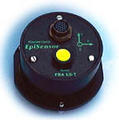PASSCAL PASSOFT Software
PASSCAL provides open-source software for downloading seismic data from data recorders, for quality assessment, and for conversion to other data formats for analysis and archiving at the IRIS Data Management Center.
PASSOFT is supported only for Mac and Linux operating systems, and not for Windows. Some Windows users have been able to use PASSOFT by first installing a Windows Subsystem for Linux.
Note - Python: We no longer support Python version lower than 3.9.
Note - MacOS: We no longer support MacOS version lower than 12 (Monterey).





